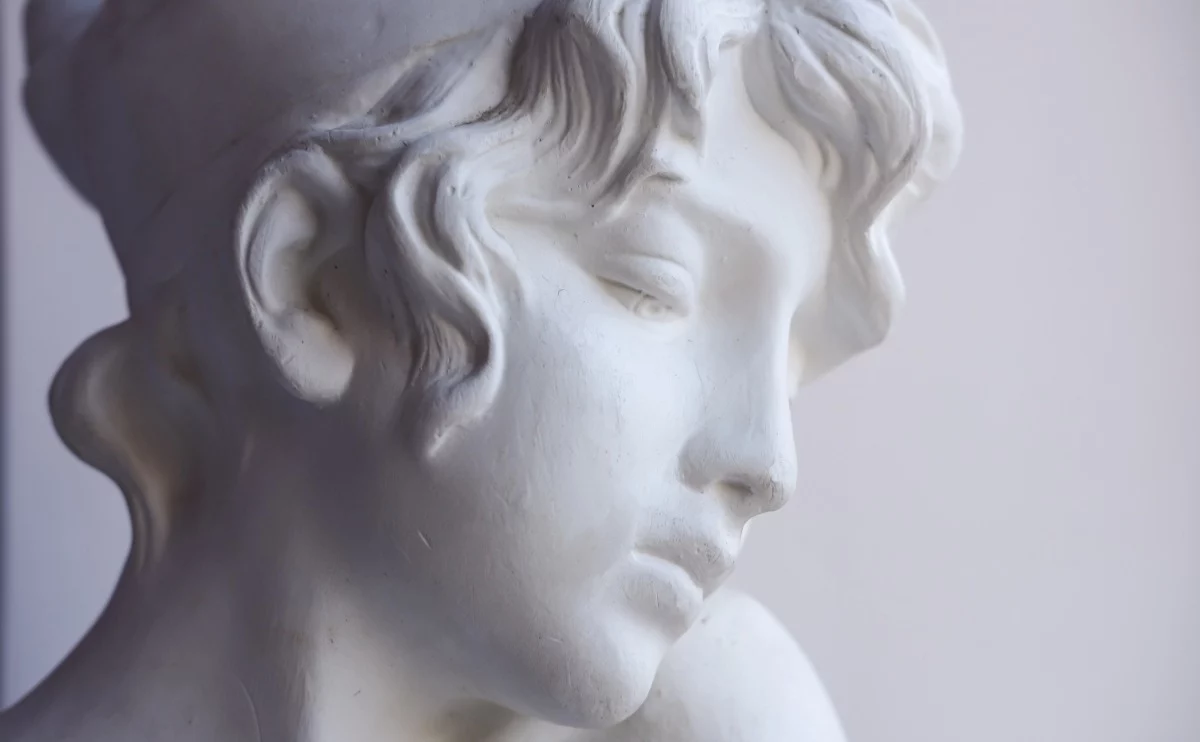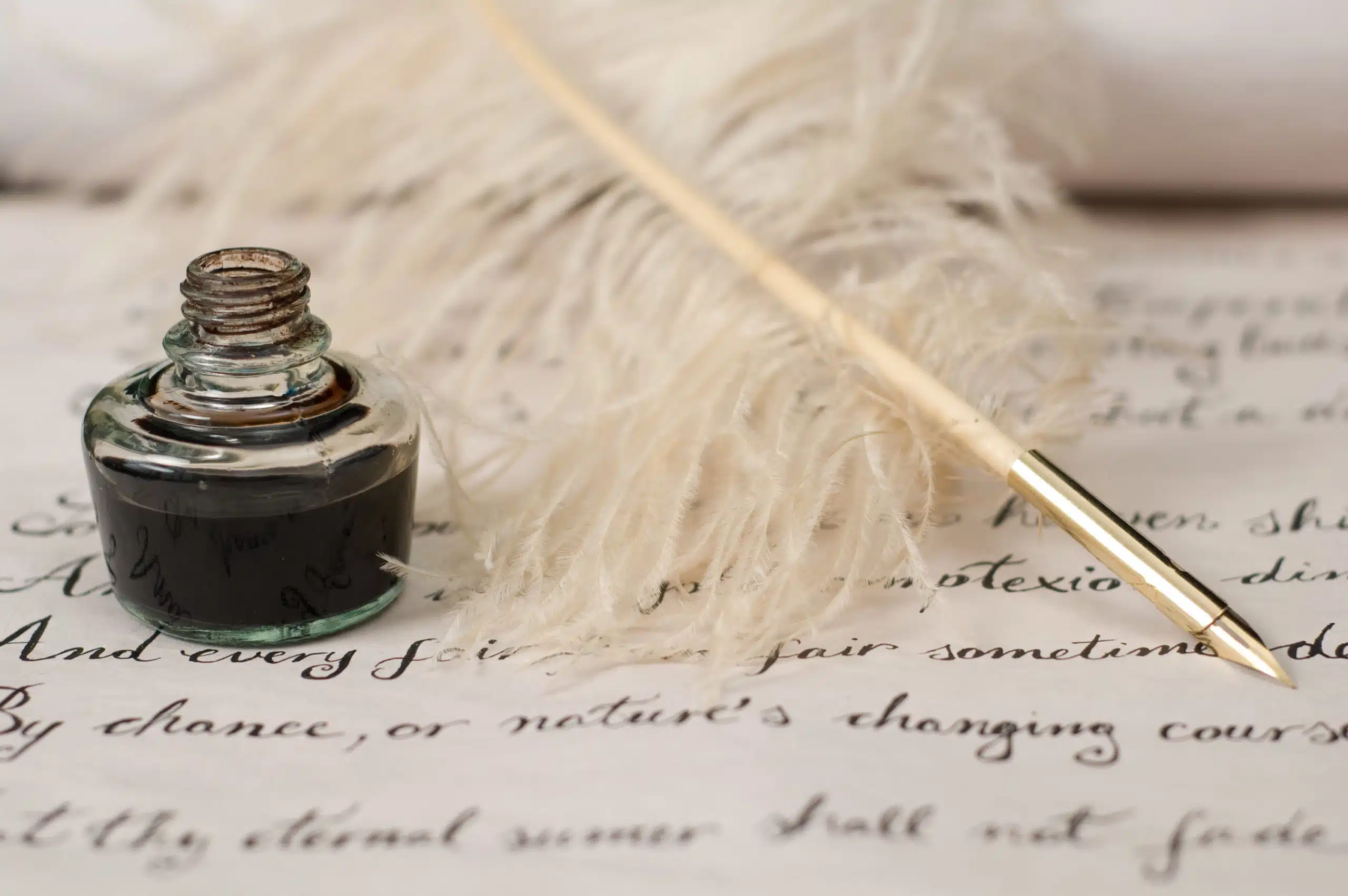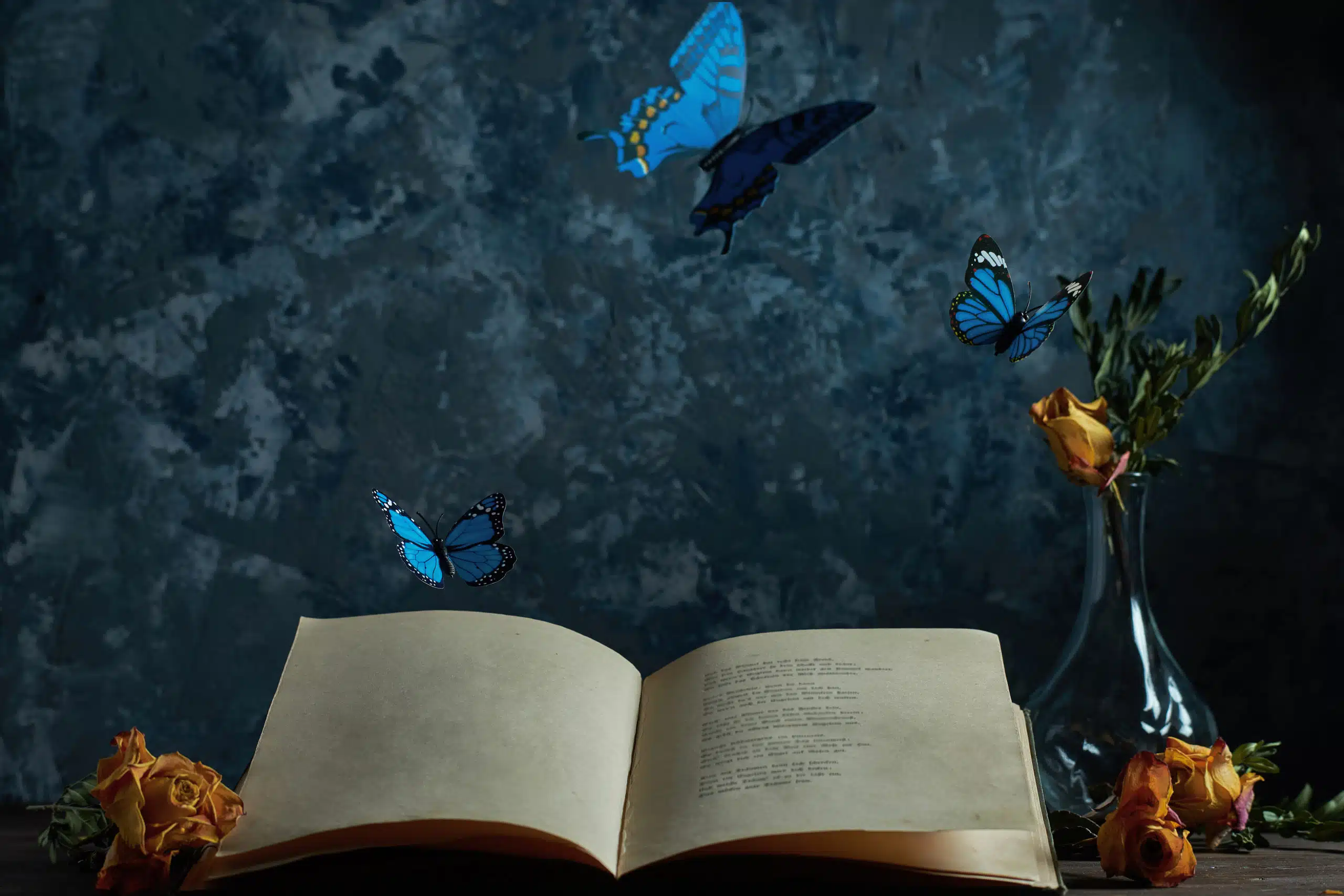Here’s what the Sapphic poetry form is:
The sapphic verse is a poem type consisting of four-line stanzas of any number.
The term sapphic is derived from the name of the ancient Greek poet Sappho.
Sappho wrote and left behind fragments of verses from which, apparently, sapphic poems have developed.
So if you want to learn all about the Sapphic poetry type, then you’ve come to the right place.
Keep reading!

Forms of Poetry: Sapphic Verse

Sapphic stanzas, named after Sappho, are a form of Aeolic verse consisting of four-line stanzas.
The form is entirely based on units we don’t normally use in English poetry, so this should absolutely be considered an advanced topic.
Sapphic verse is largely a form of the past and is significant for its place in human history, rather than for any usage in popular culture.
As the name would imply its most famous practitioner, by far, is the ancient female poet Sappho of Lesbos.
Basic Properties of Sapphic Verse

| Rhyme Structure | None |
| Meter | Strict, based on Aeolic verse |
| Origin | Lesbos (Ancient Greece) |
| Popularity | Mostly restricted to a historical form associated with a handful of ancient poets |
| Theme | Varies |
How Is Sapphic Verse Structured?

Sapphic verse utilizes three different forms of Aeolic verse, those being the greater Sapphic, the lesser Sapphic, and the Sapphic stanza.
In order to better conceptualize Sapphic verse, we must first run through some of the basics of Aeolic verse.
Aeolic verse, a class of ancient Greek poetry predominantly coming from the works of those who spoke the Aeolic dialect, utilizes syllables called longums, breves, and anceps.
A longum refers to a syllable that contains a long vowel or diphthong, or multiple consonants.
“Art” would be a longum due to featuring two consonants immediately after a vowel sound. Greek longums are often abbreviated with a hyphen or dash. (-)
A brevis refers to an open syllable utilizing a short vowel.
The name “Tina” ends in a brevis, since the “-a” meets both criteria. The brevis is often abbreviated with a lowercase u.
Anceps is a more unusual distinction, in which the syllable could be read as either heavy or light.
These are typically abbreviated with a lowercase x.
The patterns for the forms used by Sapphic verse are as follows, in which (1) represents the greater Sapphic, (2) represents the lesser Sapphic, and (3) represents the adonic.
- 1. u – – – | u u – | – u u – u – –
- 2. u – x – u u – u – –
- 3. u u – –
Note that the adonic would typically be used in the last line of a quatrain that otherwise featured three lines of lesser Sapphic, so it is slightly less relevant than the other two.
So for our purposes, understand that the most common format for a Sapphic stanza is as follows:
- u – x – u u – u – –
- u – x – u u – u – –
- u – x – u u – u – –
- u u – –

If this seems more like a lesson in linguistics than in poetry, then that isn’t your imagination.
Sapphic verse was designed with the Greek language in mind, and it as such much harder for an English speaker to wrap their head around it since it relies so heavily on the categorizations used in the original language.
English Sapphics do not utilize the full scope of the originally intended structure of the Sapphic, thankfully.
In order to make the form more comprehensible in English, the longums are replaced with stressed syllables and the breves are replaced with unstressed syllables. (The anceps is largely ignored.)
History of Sapphic Verse

While Sapphic verse is mostly known for the works of Sappho, her contemporary Alcaeus of Mytilene may have actually been the inventor of the form.
However, it is possible that older works from their colleagues could be unearthed to disprove this at a later date.
Regardless, Sapphic verse is almost exclusively known for the works of Sappho, who achieved much greater historical fame than Alcaeus, thus the naming.
Centuries later, Sapphic verse did briefly appear in the works of Roman poets who admired the works of Sappho.
Of special note are the works of Horace, whose Odes became the standard by which later Sapphics would be measured.

Sapphic verse even survived into the Medieval era, thanks in large part to the popularity of poetry among members of the clergy who, conveniently enough, studied Latin as part of their profession.
While Sapphic verse has been attempted in English, understandable concessions have had to be made in order to make it more comfortable to work with.
Remember the lengthy discussion on longums, breves, and anceps?
If it seems wholly unreasonable to try to make that system work in English, you’re not alone in that realization.
Instead of trying to reinvent the wheel, English poets have largely likened the longums of Greece to stressed syllables and the brevis to the unstressed syllable.
Example of a Sapphic Poem

from The Craftsman by Rudyard Kipling
Once, after long-drawn revel at The Mermaid,
He to the overbearing Boanerges
Jonson, uttered (if half of it were liquor,
Blessed be the vintage!)
Saying how, at an alehouse under Cotswold,
He had made sure of his very Cleopatra,
Drunk with enormous, salvation-contemning
Love for a tinker.

Above is a rare example of a Sapphic written entirely in English and for English readers.
As mentioned previously, the focus shifts to stressed and unstressed syllables, units that are much easier for an English speaker to understand.
It should be understood, however, that all English Sapphics are technically imitations of the Sapphic that try to capture its essential spirit.
Based on the standards of the original poets, these are not true Sapphics.
This is only a passing remark, however, as it would be unrealistic and incredibly arrogant to try to convert a form that was never meant to be for English poems in the first place without some understandable compromises.
Tips for Writing a Sapphic

Let’s get the obvious out of the way first: Do not try to convert the entirety of the original Sapphic form into English.
Attempting to do so will only lead to headaches and heartbreak.
It is understood, and accepted, that Sapphics written in English utilize stressed and unstressed syllables instead of being faithful to the original form.
Read as many Sapphics as you can and break them down syllable by syllable.
This will cement your understanding of the form and will help you to see tricks that the poets are using to make the pattern work for them.
You’ll find that words ending in “-ing” are consistently used in similar placements in Sapphic poems, for example, because they provide an easy unstressed syllable.

Give up on making it rhyme unless you’re determined to show off.
The sapphic is somewhat demanding on its own since it has a more irregular rhythm than what writers of Iambic or Trochaic might be used to.
I wholeheartedly recommend mastering the basic principles of the form before trying to add artistic flourishes like rhyme schemes, and rhyme is not expected of a Sapphic in the first place.
Finally, practice.
If you want to fully master a form then you need to write ten or twenty or fifty poems in that form.
Shakespeare wrote well over a hundred sonnets that we know of and may have written dozens or even hundreds more in his spare time for all we know.
A well-written poem, of any form, should be a testament to your obsession if nothing else.
Sapphics are no exception.
Poet’s Note

I love that we have a specific term for a form dedicated almost entirely to a handful of famous historical poets of one isolated region in one country in southern Europe from thousands of years ago, named after a specific famous member of a specific profession.
I’m sure that comes up in conversations all the time, so it’s nice that we have a term for it.
Comprehensive Collection of Poetry Forms: Craft Words Into Art

Dare to traverse the entire spectrum of poetic forms, from the commonplace to the extraordinary?
Venture from the quintessential Sonnet to the elusive Mistress Bradstreet stanza, right through to the daunting complexity of Cro Cumaisc Etir Casbairdni Ocus Lethrannaigecht.
For those with a zeal to encounter the full breadth of poetry’s forms, this invitation is yours.
Start exploring the vast universe of poetic ingenuity with our comprehensive array of poetry forms right now!
